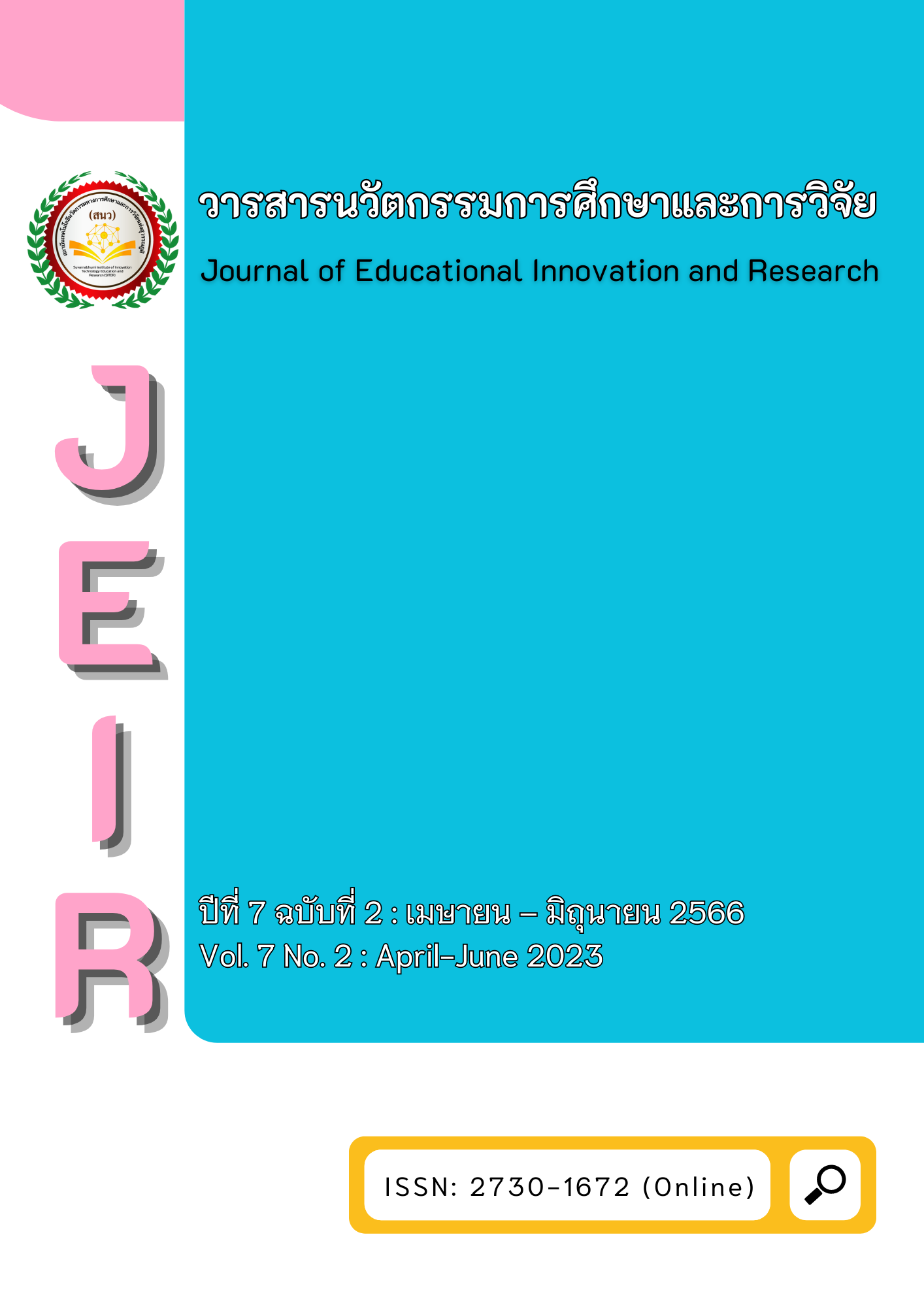Mediating Effects of Work Passion on the Relationship between Personal-Environment Fit and Employee Creativity
Main Article Content
บทคัดย่อ
Based on Lewin's "field theory" and Schneider's "attraction-selection-friction" theory, this study explores the influence of three dimensions of person-environmental fit (person-organizational fit, person-job fit, and person-leadership fit) on employees' creativity from the perspective of person-situation interaction. The results show that the three dimensions of person-environment fit have a significant positive impact on employee creativity, and work passion plays a significant role in mediating the relationship between person-job fit, person-leadership fit and employee creativity. The results show that all three dimensions of person-environment fit have a significant positive influence on employee creativity, and work passion plays a fully mediating role between person-work fit, person-leadership fit and employee creativity, and a partially mediating role between person-organization fit and employee creativity. This finding provides support for corporate management philosophy and practice to achieve the co-development of enterprises and employees, and helps to promote the development of corporate HRM practice. It enriches the research on fitting theory and creativity theory.
Article Details

อนุญาตภายใต้เงื่อนไข Creative Commons Attribution-NonCommercial-NoDerivatives 4.0 International License.
เอกสารอ้างอิง
Amabile, T.M., et al. (2005). Affect and Creativity at Work. Administrative Science Quarterly, 50, 367-403.
Chen F. (2005). A Study on Work Enthusiasm of Employees--Taking the Financial Industry as an Example. Kaohsiung: Taiwan Sun Yat-Sen University.
Coelho F, Augusto M, Lages L F. (2011). Contextual Factors and the Creativity of Frontline Employees: The Mediating Effects of Role Stress and Intrinsic Motivation. Journal of Retailing, 87(1), 31-45.
Deci, E. L., Ryan, R. M. (2004). Handbook of Self-Determination Research. New York: University Rochester Press.
Edwards, I.R., Shipp, A.I. (2007). The Relationship Between Person-Environment Fit and Outcomes: An Integrative. Perspectives on organization Fit.
Karen, J.J., Amy, K.B. (2006). Toward a Multidimensional Theory of Person-Environment Fit. Journal of Managerial Issues, 18(2), 193–212.
Kristof, A. L. (1996). Person-organization fit: An integrative review of its conceptualizations, measurement, and implications. Personnel Psychology, 49(1), 1–49.
Lewin, K. (1939). Field Theory and Experiment in Social Psychology: Concepts and Methods. American Journal of Sociology, 44, 868-896.
Lewin, K. (1938). The Conceptual Representation and Measurement of Psychological Forces. Durham, NC: Duke University Press.
Liu, D., Chen, X.P., & Yao, X. (2011). From autonomy to creativity: A multilevel investigation of the mediating role of harmonious passion. Journal of Applied Psychology, 96(2), 294–309.
Vallerand, R.J., Lalonde, D.R. (2011). The MPIC Model: The Perspective of the Hierarchical Model of Intrinsic and Extrinsic Motivation, Psychological Inquiry: An International. Journal for the Advancement of Psychological Theory, 22(1), 45-51.
Vallerand, R. J., Paquet, Y., Philippe, F. L., & Charest, J. (2010). On the role of passion for work in burnout: A process model. Journal of Personality, 78(1), 289-312.
Vallerand, R.J., et al. (2006). Passion in Sport: A Look at Determinants and Affective Experiences. Joumal of Sport and Exercise Psychology, 28, 454-478.
Vallerand, R. J. (2000). Deci and Ryan's Self-Determination Theory: A View from the Hierarchical Model of Intrinsic and Extrinsic Motivation. Psychological Inquiry, 11, 312-318.


